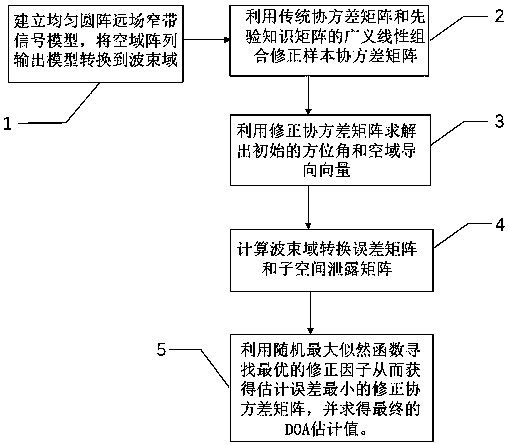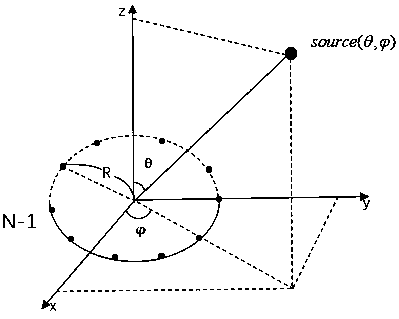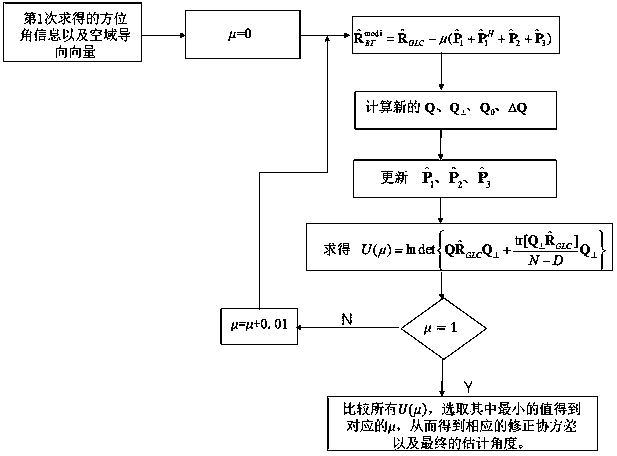Beam domain Root-MUSIC method based on covariance correction
A technology of beam domain and covariance, applied in instruments, character and pattern recognition, computer components, etc., can solve problems such as subspace leakage, insufficient signal space information, and difficult model processing, so as to reduce errors and improve estimation accuracy Effect
- Summary
- Abstract
- Description
- Claims
- Application Information
AI Technical Summary
Problems solved by technology
Method used
Image
Examples
Embodiment Construction
[0021] In order to better understand the technical scheme of the present invention, the present invention will be further described in detail below in conjunction with the accompanying drawings:
[0022] For the procedure of this method, see figure 1 , a beam-domain Root-MUSIC method based on covariance correction, which performs beam-domain conversion on the output model of the uniform circular array array, considering the impact of low snapshots, and using the generalized linear combination of the traditional estimated covariance matrix and prior knowledge matrix to correct the covariance Variance matrix, using the covariance to obtain the initial DOA estimate and spatial steering vector, based on considering the beam domain conversion error caused by fewer sensors and the error caused by subspace leakage under low snapshots, and looking for the optimal correction factor to continuously reduce The error between the sample covariance and the true value, so as to obtain the fi...
PUM
 Login to View More
Login to View More Abstract
Description
Claims
Application Information
 Login to View More
Login to View More - R&D Engineer
- R&D Manager
- IP Professional
- Industry Leading Data Capabilities
- Powerful AI technology
- Patent DNA Extraction
Browse by: Latest US Patents, China's latest patents, Technical Efficacy Thesaurus, Application Domain, Technology Topic, Popular Technical Reports.
© 2024 PatSnap. All rights reserved.Legal|Privacy policy|Modern Slavery Act Transparency Statement|Sitemap|About US| Contact US: help@patsnap.com










